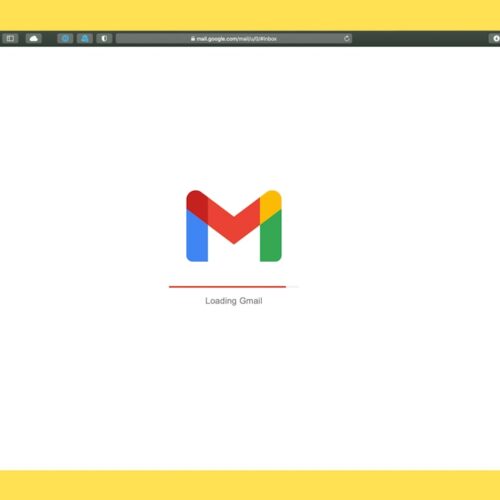In today’s digital landscape, email marketing has become an essential tool for businesses looking to grow and thrive. With the rise of social media and other digital marketing channels, some may question the relevance of email marketing. However, email remains one of the most effective ways to reach and engage with customers.
One of the key benefits of email marketing is increased brand awareness. By regularly sending emails to your subscribers, you can keep your brand top-of-mind and ensure that your audience is aware of your products or services. Additionally, email marketing allows for personalized communication, which can help build a stronger connection with your customers.
Another advantage of email marketing is customer engagement. Through well-crafted emails, businesses can provide valuable content, promotions, and updates to their subscribers. This not only keeps customers engaged but also encourages them to take action, such as making a purchase or sharing their experience with others.
Furthermore, email marketing has a direct impact on sales. According to a study by DMA, for every $1 spent on email marketing, the average return on investment (ROI) is $42. This demonstrates the potential for businesses to generate revenue through effective email campaigns.
Key Takeaways
- Email marketing is crucial for business growth.
- Define your target audience and create buyer personas to tailor your content.
- Offer valuable content and incentives to encourage sign-ups.
- Optimize your website for email list building and use social media and paid advertising to expand your reach.
- Segment your email list and personalize your communications to improve your strategy.
Define Your Target Audience and Create Buyer Personas
Understanding your target audience is crucial for successful email marketing. By defining your target audience and creating buyer personas, you can tailor your emails to meet their specific needs and preferences.
To define your target audience, start by conducting market research. This can involve analyzing demographic data, conducting surveys or interviews, and studying your competitors’ customer base. By gathering this information, you can gain insights into who your ideal customers are and what they are looking for.
Once you have a clear understanding of your target audience, you can create buyer personas. Buyer personas are fictional representations of your ideal customers and help you understand their motivations, pain points, and buying behaviors. When creating buyer personas, consider factors such as age, gender, occupation, interests, and challenges they may face.
By creating buyer personas, you can tailor your email content to address the specific needs and interests of each segment of your audience. This will help increase the relevance and effectiveness of your email campaigns.
Offer Valuable Content and Incentives to Encourage Sign-Ups
To encourage sign-ups for your email list, it’s important to offer value to your subscribers. People are more likely to provide their email addresses if they believe they will receive something valuable in return.
One way to provide value is by offering exclusive content. This can include e-books, whitepapers, or guides that provide valuable information or insights related to your industry or niche. By offering this type of content, you position yourself as an expert in your field and give subscribers a reason to stay engaged with your emails.
In addition to valuable content, incentives can also be effective in encouraging sign-ups. For example, you can offer a discount or coupon code for new subscribers. This not only provides an immediate benefit to the subscriber but also gives them a reason to make a purchase from your business.
Another incentive could be exclusive access to new products or services. By offering early access or special promotions to your email subscribers, you create a sense of exclusivity and make them feel like valued customers.
Optimize Your Website for Email List Building
Your website plays a crucial role in building your email list. By optimizing your website design and content, you can encourage visitors to sign up for your email list.
One important aspect of website optimization is the placement of clear calls-to-action (CTAs). CTAs should be prominently displayed on your website and clearly communicate the benefits of signing up for your email list. For example, you can use CTAs such as “Sign up for our newsletter to receive exclusive discounts and updates” or “Join our community and get access to valuable content.”
Another important factor to consider is the number of form fields required for sign-up. The more form fields you have, the more friction you create for visitors. Keep your sign-up forms simple and only ask for essential information, such as name and email address. This will increase the likelihood of visitors completing the sign-up process.
Additionally, consider using exit-intent pop-ups to capture the attention of visitors who are about to leave your website. These pop-ups can offer an incentive, such as a discount or free resource, to encourage visitors to provide their email addresses before leaving.
Utilize Social Media and Paid Advertising to Expand Your Reach
Social media and paid advertising can be powerful tools for expanding your reach and driving traffic to your website, where visitors can then sign up for your email list.
When using social media, it’s important to choose the platforms that are most relevant to your target audience. By focusing your efforts on the platforms where your audience is most active, you can maximize your reach and engagement.
To effectively use social media for email list building, create compelling content that encourages followers to sign up for your email list. This can include promoting exclusive content or incentives that are only available to subscribers.
Paid advertising can also be an effective way to expand your reach and drive traffic to your website. Platforms such as Google Ads and Facebook Ads allow you to target specific demographics and interests, ensuring that your ads are seen by the right audience.
When creating ad campaigns, make sure to clearly communicate the benefits of signing up for your email list. This will help increase click-through rates and conversions.
Leverage Referral Marketing and Word-of-Mouth Promotion

Referral marketing and word-of-mouth promotion can be powerful strategies for growing your email list. By incentivizing referrals and encouraging customers to share their experiences with others, you can tap into the power of social proof.
One way to incentivize referrals is by offering a reward for each successful referral. For example, you can offer a discount or free gift to both the referrer and the person they refer. This not only encourages existing customers to refer others but also provides an incentive for new customers to sign up for your email list.
Additionally, encourage customers to share their experiences with others through social media or online reviews. Positive reviews and testimonials can help build trust and credibility, making it more likely that others will sign up for your email list.
Host Events and Webinars to Attract and Engage Subscribers
Hosting events and webinars can be an effective way to attract and engage subscribers. By providing valuable content and opportunities for interaction, you can build a stronger connection with your audience.
When planning events or webinars, consider the interests and needs of your target audience. What topics or themes would be most relevant and valuable to them? By addressing their specific pain points or challenges, you can position yourself as a trusted resource and increase the likelihood of sign-ups.
Promote your events or webinars through your email list, social media, and other marketing channels. This will help generate interest and drive traffic to your website, where visitors can then sign up for your email list.
During the event or webinar, make sure to provide valuable content and opportunities for interaction. This can include Q&A sessions, polls, or breakout sessions where attendees can network with each other. By creating a positive and engaging experience, you increase the likelihood that attendees will become subscribers.
Use Pop-Ups and Exit-Intent Offers to Capture Attention
Pop-ups and exit-intent offers can be effective tools for capturing the attention of website visitors and encouraging them to sign up for your email list.
Pop-ups are windows that appear on top of a webpage, usually with a call-to-action or an offer. When using pop-ups, it’s important to strike a balance between capturing attention and not being too intrusive. Consider using timed pop-ups or scroll-triggered pop-ups to ensure they appear at the right moment.
Exit-intent offers are pop-ups that appear when a visitor is about to leave your website. These offers can provide an incentive, such as a discount or free resource, to encourage visitors to provide their email addresses before leaving.
When creating pop-ups or exit-intent offers, make sure to clearly communicate the benefits of signing up for your email list. This will help increase conversions and encourage visitors to take action.
Segment Your Email List and Personalize Your Communications
Segmenting your email list and personalizing your communications is essential for maximizing the effectiveness of your email marketing campaigns.
Segmentation involves dividing your email list into smaller groups based on specific criteria, such as demographics, purchase history, or engagement level. By segmenting your list, you can send more targeted and relevant emails to each group, increasing the likelihood of engagement and conversions.
Personalization goes beyond simply addressing subscribers by their first name. It involves tailoring the content and messaging of your emails to meet the specific needs and interests of each segment of your audience.
To personalize your communications, use the data you have collected about your subscribers, such as their purchase history or browsing behavior. This will allow you to send emails that are highly relevant and valuable to each individual subscriber.
Measure and Analyze Your Results to Continuously Improve Your Strategy
Measuring and analyzing your email marketing results is crucial for continuously improving your strategy and achieving better results over time.
Start by tracking key metrics such as open rates, click-through rates, conversion rates, and unsubscribe rates. These metrics will give you insights into how well your emails are performing and where there may be room for improvement.
In addition to tracking metrics, make use of A/B testing to experiment with different elements of your emails, such as subject lines, CTAs, or content. By testing different variations and analyzing the results, you can identify what works best for your audience and make data-driven decisions to optimize your campaigns.
Furthermore, pay attention to feedback from your subscribers. Monitor replies to your emails and take note of any comments or suggestions. This feedback can provide valuable insights into what your audience wants and help you refine your email marketing strategy.
Email marketing is a powerful tool for businesses looking to grow and achieve their goals. By understanding your target audience, offering valuable content and incentives, optimizing your website, utilizing social media and paid advertising, leveraging referral marketing, hosting events and webinars, using pop-ups and exit-intent offers, segmenting your email list, personalizing your communications, and measuring and analyzing your results, you can drive growth through email marketing.
Implementing these strategies will not only increase brand awareness and customer engagement but also drive sales and revenue. Email marketing allows businesses to build stronger connections with their audience and provide value that keeps customers coming back for more. So don’t underestimate the power of email marketing – it’s a key driver of business growth in today’s digital landscape.


